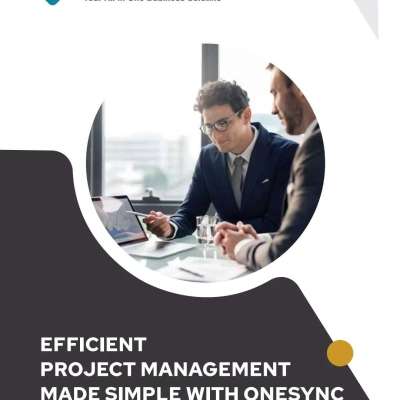
Onesync HRM
Опубликовано От Onesync All In One Business Solution
- СостояниеВ наличии
- Типновый
Onesync ERP's Human Resource Management System (HRM) is a central component of their all-in-one business solution, designed to streamline and optimize various HR functions within an organization. Here's an overview of what you can typically expect from Onesync ERP's HRM:
**1. Employee Records Management:** Onesync ERP's HRM allows businesses to maintain comprehensive employee records, including personal information, employment history, skills, certifications, and contact details. This centralized database simplifies HR administration and ensures data accuracy.
**2. Recruitment and Applicant Tracking:** The system may include tools for managing the entire recruitment process, from posting job openings to candidate screening and onboarding. HR professionals can track applicants, schedule interviews, and make informed hiring decisions.
**3. Attendance and Time Tracking:** Onesync ERP's HRM often features attendance and time tracking functionality. It enables employees to clock in and out, record working hours, and request time off. The system can help automate attendance calculations and manage leave requests.
**4. Payroll Management:** Efficient payroll processing is essential for any organization. Onesync ERP's HRM may include payroll management features to calculate salaries, deductions, and taxes accurately. It often supports direct deposit and generates pay stubs for employees.
**5. Performance Management:** The system facilitates performance evaluations and feedback processes. HR professionals can set goals, conduct performance reviews, and document employee achievements or areas for improvement.
**6. Training and Development:** HRM often includes tools for tracking employee training and development. This feature helps identify skill gaps, plan training programs, and monitor progress. It can also store training materials and certifications.
**7. Benefits Administration:** Businesses can manage employee benefits, such as health insurance, retirement plans, and other perks, within the system. Employees can review benefit options, make selections, and view benefit-related information.
**8. Compliance and Reporting:** Onesync ERP's HRM helps ensure compliance with labor laws and regulations. It may provide pre-configured reports and documentation for auditing purposes, making compliance management more straightforward.
**9. Employee Self-Service:** Self-service portals empower employees to access and update their personal information, submit leave requests, view pay stubs, and access HR-related resources. This reduces the administrative burden on HR teams.
**10. Analytics and Insights:** The system often offers analytics and reporting tools to help HR professionals gain insights into workforce trends, turnover rates, compensation analysis, and other key HR metrics.
**11. Mobile Accessibility:** Many HRM solutions, including Onesync ERP's, offer mobile apps or responsive web interfaces, allowing employees and HR staff to access HR-related information and perform tasks from anywhere.
**12. Security:** Robust security measures are critical for protecting sensitive HR data. Onesync ERP likely incorporates data encryption, access controls, and user authentication to ensure data security and privacy.
**13. Integration:** Seamless integration with other modules of the Onesync ERP system, such as payroll, finance, and project management, ensures that HR data is synchronized across the organization, reducing data duplication and ensuring data consistency.
In summary, Onesync ERP's HRM simplifies HR operations, enhances data accuracy, and empowers HR professionals to efficiently manage various aspects of workforce management. It promotes compliance, supports employee development, and provides valuable insights to drive HR strategies and decision-making. This comprehensive HRM contributes to the overall efficiency and success of an organisation.





